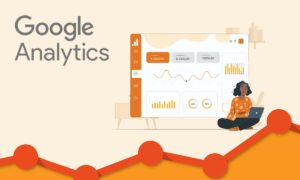| A |
| B |
| C |
| D |
| E |
| F |
| G |
| H |
| I |
| J |
| K |
| L |
| M |
| N |
| O |
| P |
| Q |
| R |
| S |
| T |
| U |
| V |
| W |
| X |
| Y |
| Z |
Google Analytics is a web analyzer that lets users monitor website traffic and viewer activity. It is a helpful tool for SEO marketing, Email marketing, website copywriting, and much more business purposes.
Google analytics has both free and paid versions. It is available to users on the Google Marketing Platform.
How does Google Analytics Work?
A JavaScript page tag is used to collect data regarding visitors. Every time users visit the website, a page tag run in their browser and gather information about them which is then forwarded to Google’s servers. On the basis of the data collected, a report is prepared and shared with the website owner.
On a downside, Google Analytics fails to gather details if a visitor has disabled cookies.
You can access Google Analytics here.
Metrics and Dimensions in Google Analytics
What are Metrics?
Metrics in Google Analytics share quantitative information about the data compiled in the analytics report. There are around 200 different types of metrics featured by Google Analytics. They let users identify:
Users: New visitors browsing the website.
Pageviews: Number of visited pages.
Bounce Rate: Proportion of users who visited only one page.
Goal completion: How many times visitors performed a specific action like purchase, subscription, etc.
Session: Time frame for which a visitor was active on the site.
Pages per session: Shares the number of pages browsed on average within one session.
What are Dimensions?

Dimensions in google analytics tell about the qualitative aspect of data collection. They include:
- Language
- Region
- Age group
- Devices specification
- Browser detail
What are the Benefits of Google Analytics
1. Opportunity to Monitor Real-Time Data
The real-time tab in Google Analytics webhooks acts as a live tracker. It provides the current website-related information to the user. Through it, one can identify the number of visitors present at any instant on the site, the number of desktop/mobile viewers, or the location of viewers.
Read Also: Content Optimization
2. Enables Efficient Ad Management
Pay-per-click advertising is a useful medium to attract traffic to your site. However, to learn about the utility of any particular ad, you require data indicating how many users click through that ad. Google Analytics monitors the click-through rate, cost per click, and other relevant information.
3. Keeps a Track of Conversion Rates
Each site has a specific goal that dictates conversion. For an e-commerce website, enticing a user to purchase is conversion. For others, it is signups, downloads, etc. No matter what the goal is, Google Analytics helps to identify how successful the site has been to achieve them.
4. Provides Insightful Information about Visitors
Knowing your target audience will let you compose more persuasive and accessible content. For example, Its shares how many mobile viewers visit your website. By utilizing this information, one can assess how mobile-friendly their site is.
